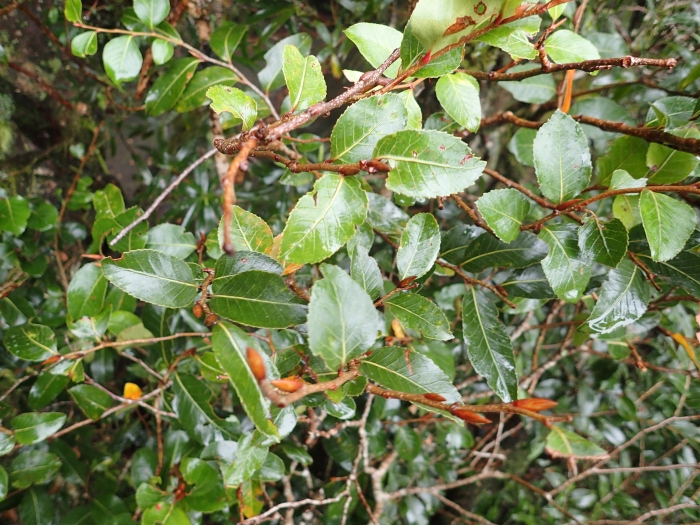Antarctic Beech
(Nothofagus moorei)
Antarctic Beech (Nothofagus moorei)
/
/

Julien Renoult
CC BY 4.0
Image By:
Julien Renoult
Recorded By:
Copyright:
CC BY 4.0
Copyright Notice:
Photo by: Julien Renoult | License Type: CC BY 4.0 | License URL: http://creativecommons.org/licenses/by/4.0/ | Rights Holder: Julien Renoult | Publisher: iNaturalist | Date Created: 2018-06-27T10:24:06-07:00 |














Estimated Native Range
Summary
Nothofagus moorei, commonly known as Antarctic Beech, is a large deciduous tree native to the cool temperate rainforests of Eastern Australia, particularly in New South Wales and southern Queensland. It often grows in moist, sheltered valleys and slopes. Antarctic Beech can reach up to 25 meters (80 feet) in height and develop massive trunks up to 1 meter in diameter. The bark is typically dark brown and scaly, providing a distinctive texture. The leaves are small, simple, and toothed, turning yellow to brown before falling in autumn.
Antarctic Beech is appreciated for its grand stature and longevity, making it a striking specimen tree in large gardens and parks. It is also valued for its ability to create a cool, shaded environment, mimicking its natural forest habitat. In cultivation, it requires consistent moisture and well-drained, acidic to neutral soil. It can tolerate a range of light conditions, from full sun to part shade, but prefers some protection from the hottest sun. While it is not commonly afflicted by serious pests or diseases, it can be sensitive to root disturbance and may not transplant well.CC BY-SA 4.0
Antarctic Beech is appreciated for its grand stature and longevity, making it a striking specimen tree in large gardens and parks. It is also valued for its ability to create a cool, shaded environment, mimicking its natural forest habitat. In cultivation, it requires consistent moisture and well-drained, acidic to neutral soil. It can tolerate a range of light conditions, from full sun to part shade, but prefers some protection from the hottest sun. While it is not commonly afflicted by serious pests or diseases, it can be sensitive to root disturbance and may not transplant well.CC BY-SA 4.0
Plant Description
- Plant Type: Tree
- Height: 50-100 feet
- Width: 20-30 feet
- Growth Rate: Moderate
- Flower Color: N/A
- Flowering Season: Spring
- Leaf Retention: Deciduous
Growth Requirements
- Sun: Full Sun, Part Shade
- Water: Medium
- Drainage: Medium
Common Uses
Low Maintenance
Natural Habitat
Cool temperate rainforests of Eastern Australia, particularly in New South Wales and southern Queensland
Other Names
Common Names: False Beech
Scientific Names: , Nothofagus moorei, Fagus moorei, Lophozonia moorei, Fagus carronii,
GBIF Accepted Name: Nothofagus moorei (F.Muell.) Krasser